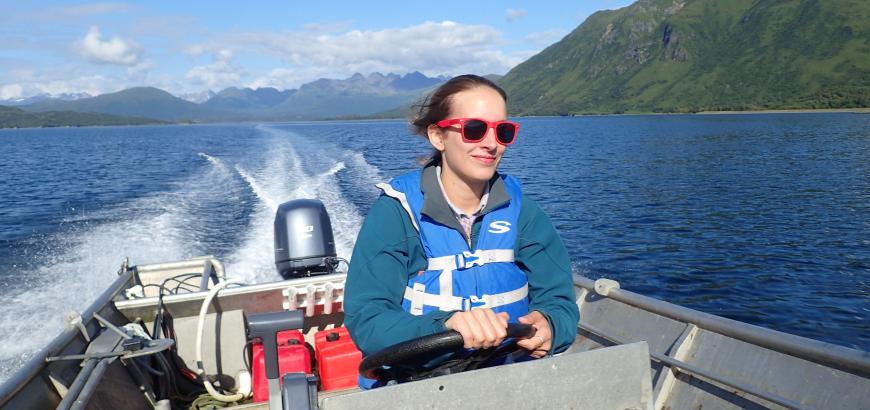by Hollis Miller
I am an archaeology PhD candidate interested in Indigenous archaeology, the study of colonialism and community-based research methods. My dissertation research is a community-oriented project based in Old Harbor, Alaska, a Sugpiaq village in the Kodiak Archipelago. With my research partners in Old Harbor, I am exploring how Indigenous Sugpiaq communities negotiated Russian colonialism through their daily lives. Russian fur traders began traveling through Sugpiaq territory in the 1760s but did not try to settle there until 1784 when trader Grigorii Shelikhov launched a successful violent attack to subdue Sugpiat living on Kodiak. Shelikhov’s aim was to conscript the skilled Sugpiaq hunters to catch sea otters and fur seals. The pelts of these animals could be sold for high profit on European and Asian markets. After the Russians’ successful attack in 1784, they established permanent settlements on Kodiak. The Russians used violence, hostage-taking and, perhaps unknowingly, disease, to take control of Sugpiaq labor and resources. Russian colonialism continued until the United States purchased Alaska in 1867. I am using evidence from archaeology, oral history and historical documentation to understand what was happening in Sugpiaq villages during Russian occupation of Kodiak.
Throughout the period of Russian colonialism, Sugpiaq people actively resisted, challenged and lived through Russian impositions — navigating the new political and social landscape to ensure their physical, cultural and spiritual survival. While historical documents often downplay or ignore Indigenous agency, archaeology and oral history are ways to recover stories that reflect an Indigenous-centered view of history and of life in the past. In my research I am seeking answers to questions such as: how did Sugpiaq diets change throughout this period? How did community members balance Russian labor demands and their own survival? How did Sugpiaq people incorporate imported materials like trade ceramics and glass beads into their lifeways? To learn more about this project and see more photos, visit my research blog or dedicated Facebook page.
Recently I have been working on archaeological excavations at a Sugpiaq village site near Old Harbor called Ing’yug, which was occupied until the late 1830s. Last summer, I, along with my advisor Ben Fitzhugh and fellow graduate student Erin Gamble, started excavating and mapping at Ing’yug. This initial fieldwork documented several ciqlluat (Sugpiaq sod houses) and well-preserved middens. Uncovering these household contexts at Ing’yug is really exciting because they provide insight into the daily lives of Sugpiaq families. The house is both a living and working space, where labor, social relations, and foodways come together. Excavating and analyzing a household context at Ing’yug is helping me to answer my research questions about the lived experience of colonialism for Sugpiaq families.
It would be impossible to undertake a research project about the past that does not also build relationships with the local and descendant communities. It is those communities that make historical and archaeological research relevant and meaningful. I am excited to be part of a generation of archaeologists that understands our work as situated within community, and I believe that an important part of my dissertation involves simply being present in Old Harbor. Drinking cups of tea in people’s kitchens, going for a banya (steam bath) with my hosts, video-calling into the local school to hear students give presentations, picking salmonberries, listening to Old Harbor locals’ stories, learning to make a spirit pouch or fireweed twine from Sugpiaq artisans — these activities are all part of what it means to do community-oriented archaeology in Old Harbor. In addition, as requested by Old Harbor leaders, I look for ways to specifically engage Sugpiaq youth, such as through paid internships, a youth archaeology camp, and collaborating on curriculum design in the local school. Building these strong relationships within Old Harbor helps me contextualize archaeological data and interpretations within the living community, while also drawing a clear connection between the Sugpiaq past and Sugpiaq futures.


